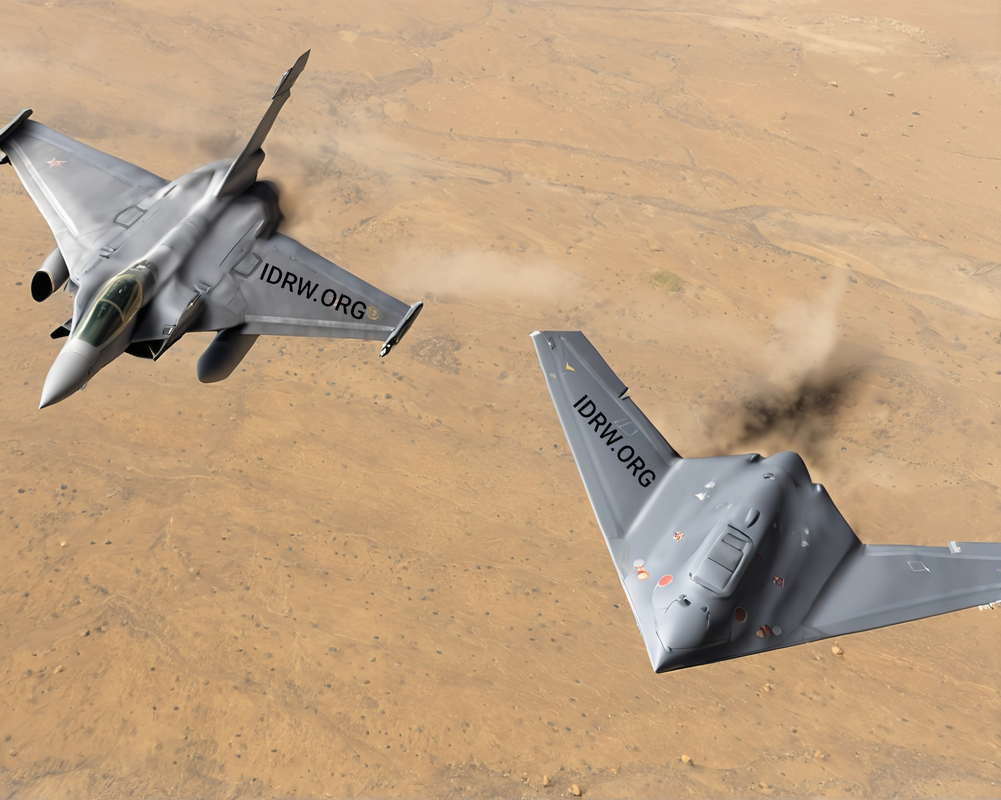SOURCE: RAUNAK KUNDE / NEWS BEAT / IDRW.ORG


In response to emerging maritime threats and the evolving nature of warfare, the Indian Navy has called on private sector companies to collaborate in developing a Naval-Collaborative Combat Air Vehicle (N-CCAV). This initiative is aimed at addressing growing challenges posed by Anti-Access/Area Denial (A2/AD) capabilities and modern integrated air defense systems at sea. The Navy envisions the N-CCAV to complement its existing combat assets, provide cost-effective strike capabilities, and enhance operational flexibility in contested maritime environments.
In light of these challenges, the Indian Navy has expressed the urgent need to restore its counter-air and air-to-surface capabilities, particularly in the presence of high-end A2/AD threats. To address these gaps, the Navy seeks to develop Collaborative Combat Air Vehicles (CCAV), which will provide the following advantages:
Counter-Air Capability: These vehicles will be capable of neutralizing integrated air defenses, enabling the Navy’s maritime forces to operate more freely.
Air-to-Surface Strike: The N-CCAVs will provide strike capability against surface targets, even in contested environments where sophisticated air defense systems are present.
Combat Mass at Range: The N-CCAV will enable the creation of “Combat Mass at Range”, allowing the Navy to deploy significant firepower at extended ranges without relying solely on costly, manned assets.
The Indian Navy has outlined several critical capabilities and characteristics for the N-CCAV to ensure it can operate effectively alongside manned aircraft and in contested environments. These include:
Teaming Operations: The N-CCAV must be able to operate in conjunction with manned aircraft, participating in air-to-surface missions while reducing crew workload. This will allow seamless integration with existing naval aviation platforms.
Affordability and Deployability: One of the key drivers of the N-CCAV program is the need for an affordable solution that can be developed and deployed within a short timeframe, addressing both cost and urgency.
Sustainability at Sea: The system must be ship-based and capable of sustaining multiple engagements in extended conflicts, ensuring it can be deployed effectively in long-term naval operations.
Revitalization of Existing Capabilities: The N-CCAV will work to revitalize existing 4+ generation fighters and air-to-surface weaponry, extending the operational life and effectiveness of the Navy’s current assets.
One of the primary design considerations for the N-CCAV is its ability to be launched from ships and to seamlessly integrate with Indian Navy operations.
The Indian Navy’s push for the development of a Naval-Collaborative Combat Air Vehicle (N-CCAV) represents a pivotal step in transforming its maritime strike capabilities. As adversaries continue to evolve their defenses, the N-CCAV will provide the Navy with a flexible, cost-effective, and scalable solution to address these challenges. By teaming with private sector companies and focusing on next-generation technologies, the Indian Navy aims to restore and enhance its air-to-surface strike capabilities, ensuring it remains a dominant force in contested maritime environments.
NOTE : Article cannot be reproduced without written permission of idrw.org in any form even for YouTube Videos to avoid Copy right strikes. Websites doing illegal reproductions will get DMCA and Legal Notices.